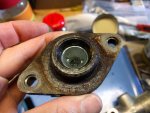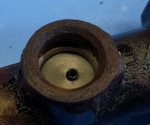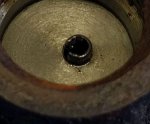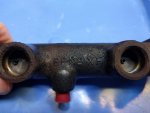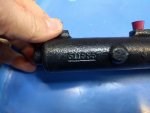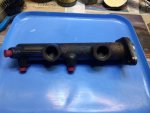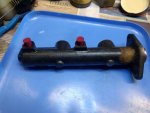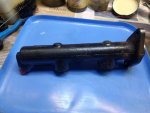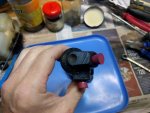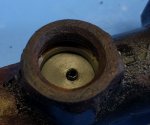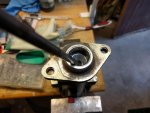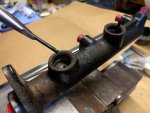Hi all,
The work to get my 505 1993 GTI wagon back on the road continues... And another newbie question, this time about the brake master cylinder.
And another newbie question, this time about the brake master cylinder.
I just removed the brake master cylinder. It it a Bendix unit. Can anyone tell me how to take it apart? Nothing relevant in the Haynes manual.
It isn't held together with a circlip and washer at the front like the ATE unit. It does however have some spring pins (beneath where the reservoir joins the cylinder) which also come with the repair kit – do they have something to do with taking it apart? Here is a photo of one:
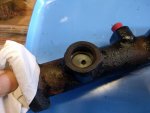
I'm guessing the spring pins act as stops,but there is no exit for them on the other side so hammering them further in is not an option I guess. Also, I can't see how to pull them up and out.
Any info much appreciated.
Cheers,
Hugo
The work to get my 505 1993 GTI wagon back on the road continues...
I just removed the brake master cylinder. It it a Bendix unit. Can anyone tell me how to take it apart? Nothing relevant in the Haynes manual.
It isn't held together with a circlip and washer at the front like the ATE unit. It does however have some spring pins (beneath where the reservoir joins the cylinder) which also come with the repair kit – do they have something to do with taking it apart? Here is a photo of one:

I'm guessing the spring pins act as stops,but there is no exit for them on the other side so hammering them further in is not an option I guess. Also, I can't see how to pull them up and out.
Any info much appreciated.
Cheers,
Hugo

